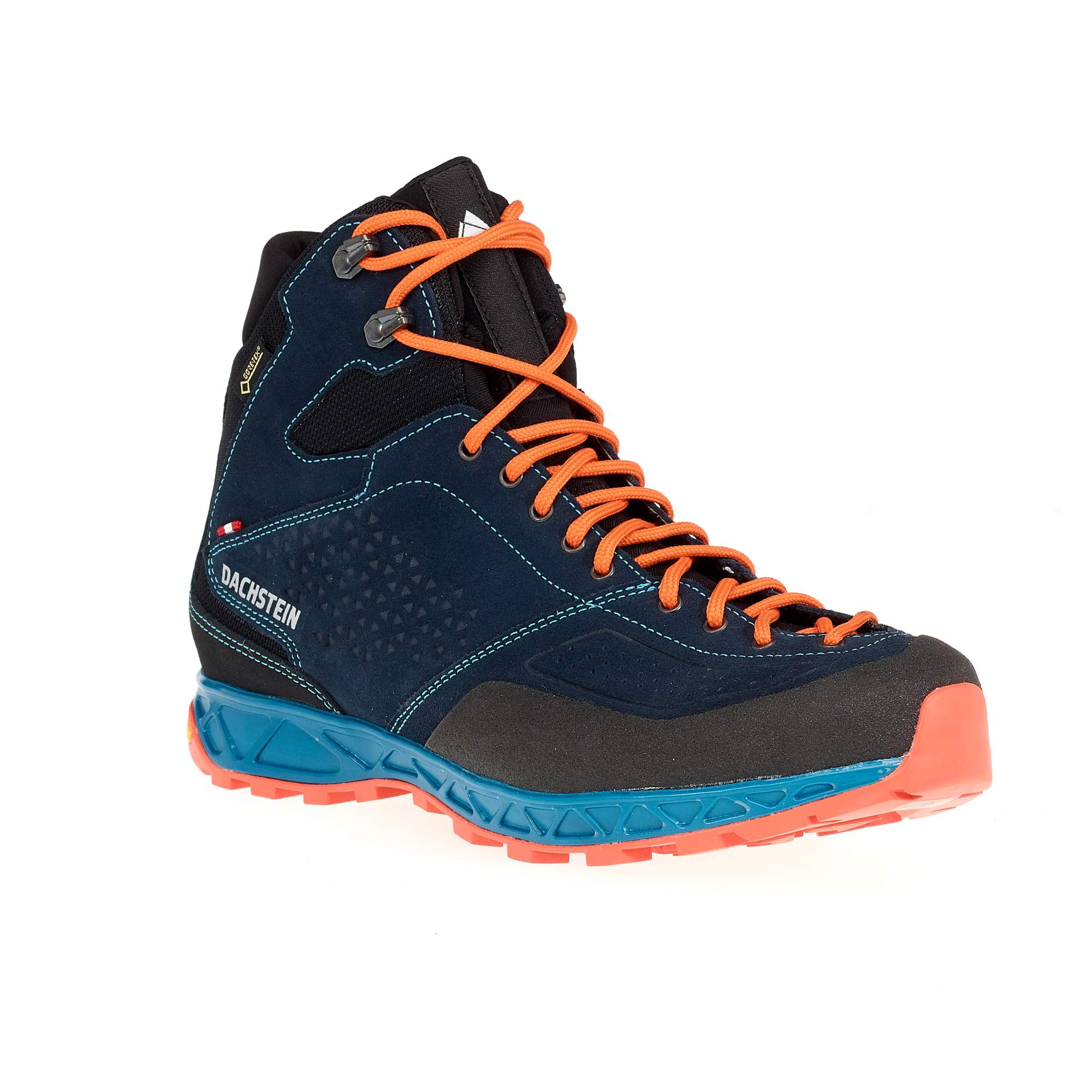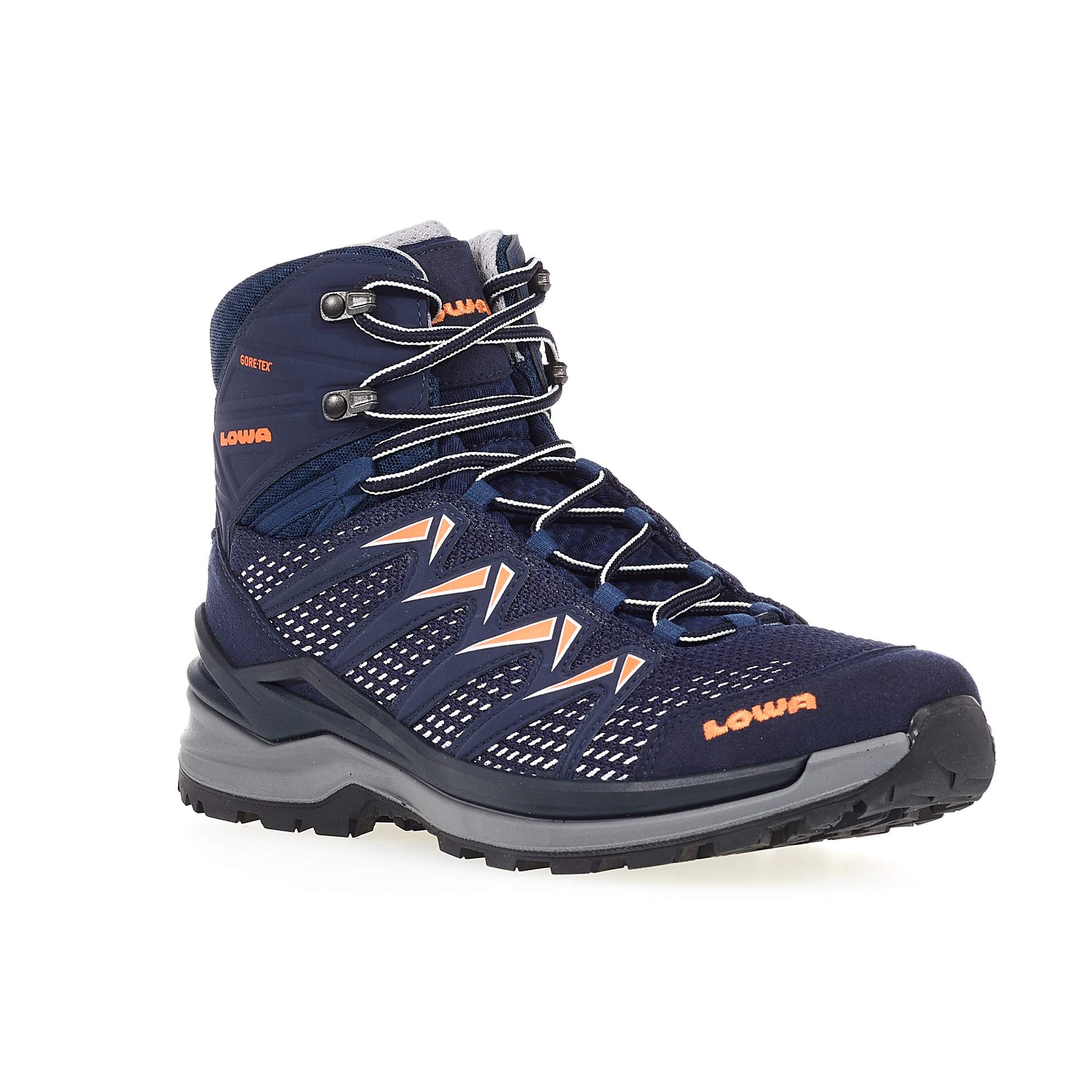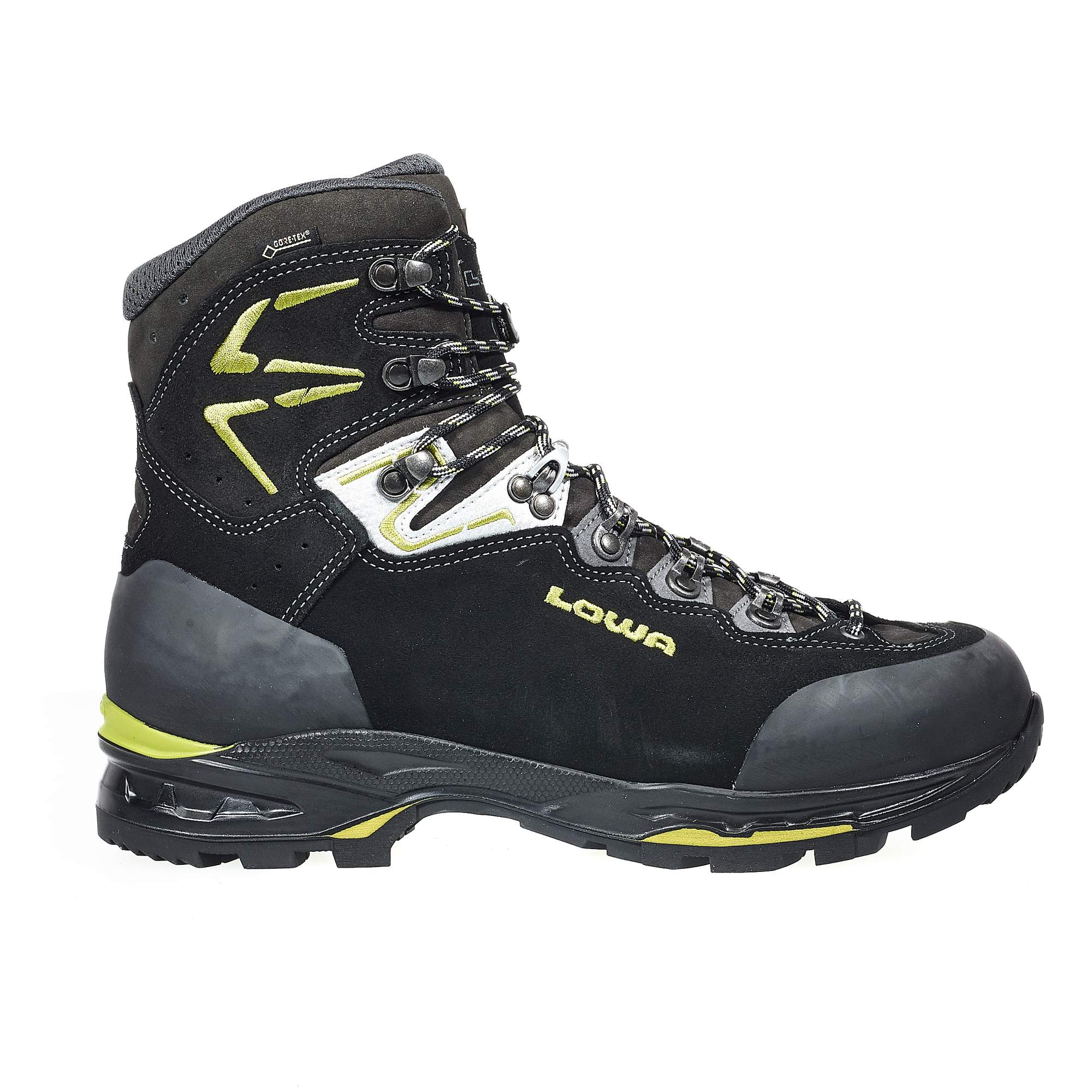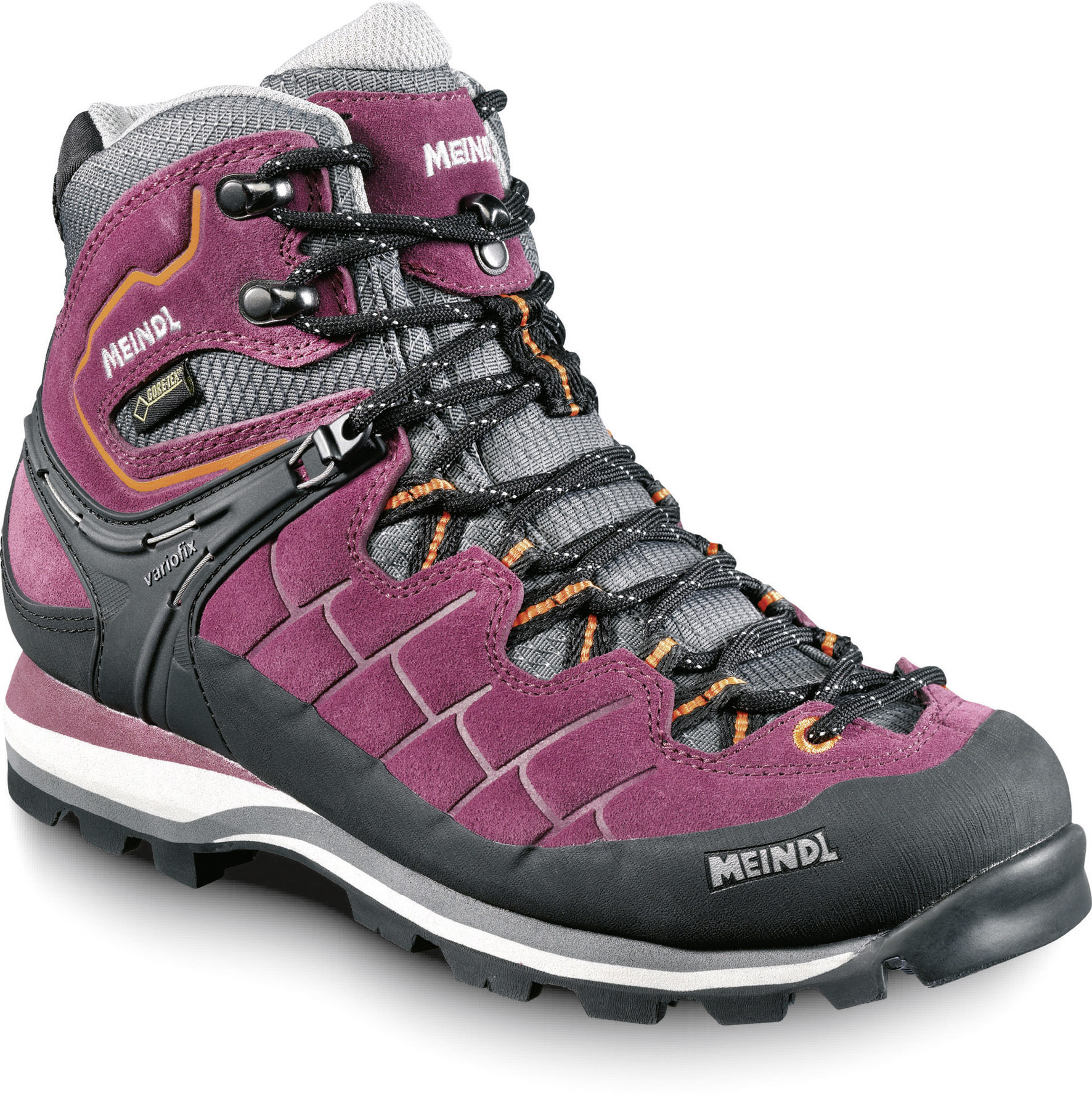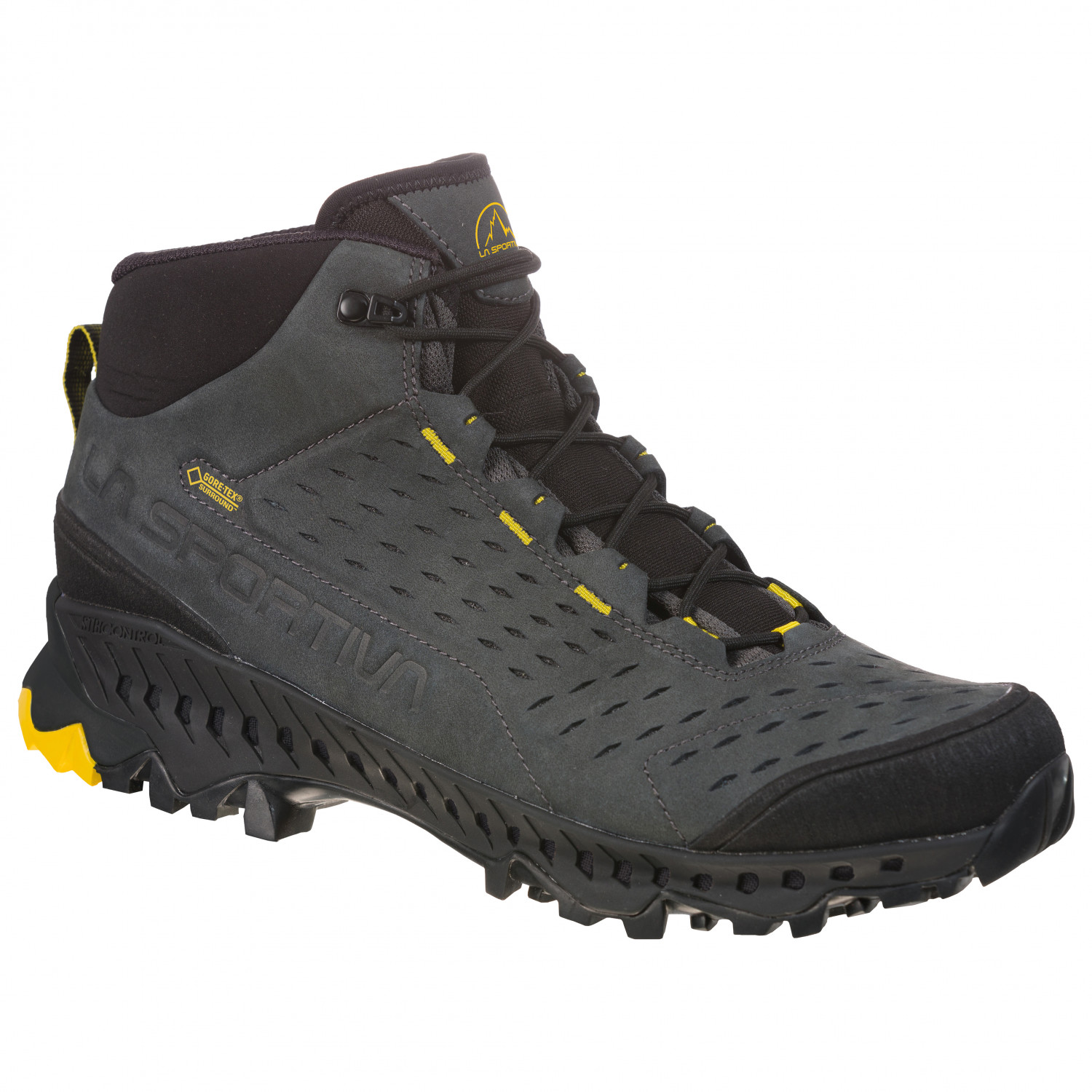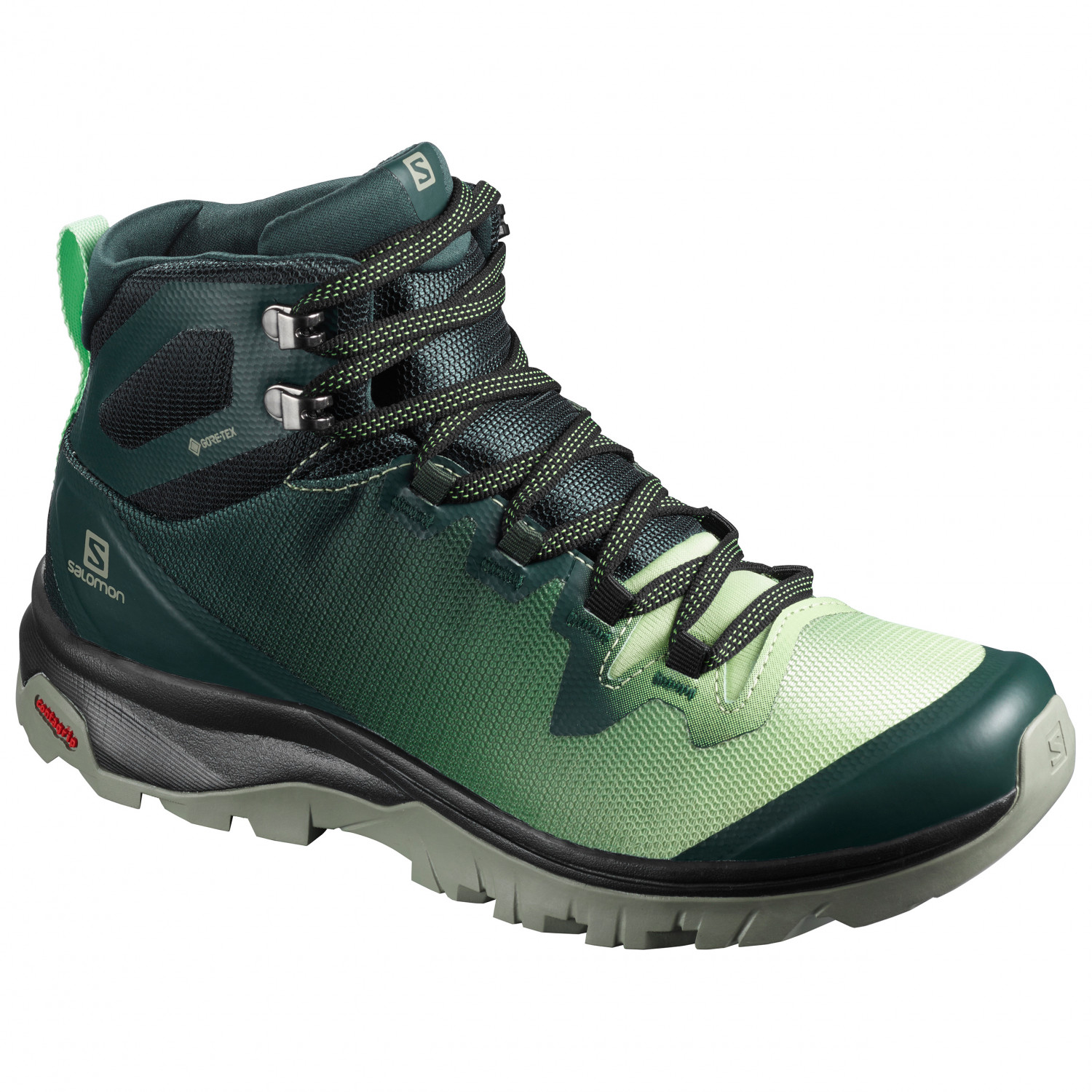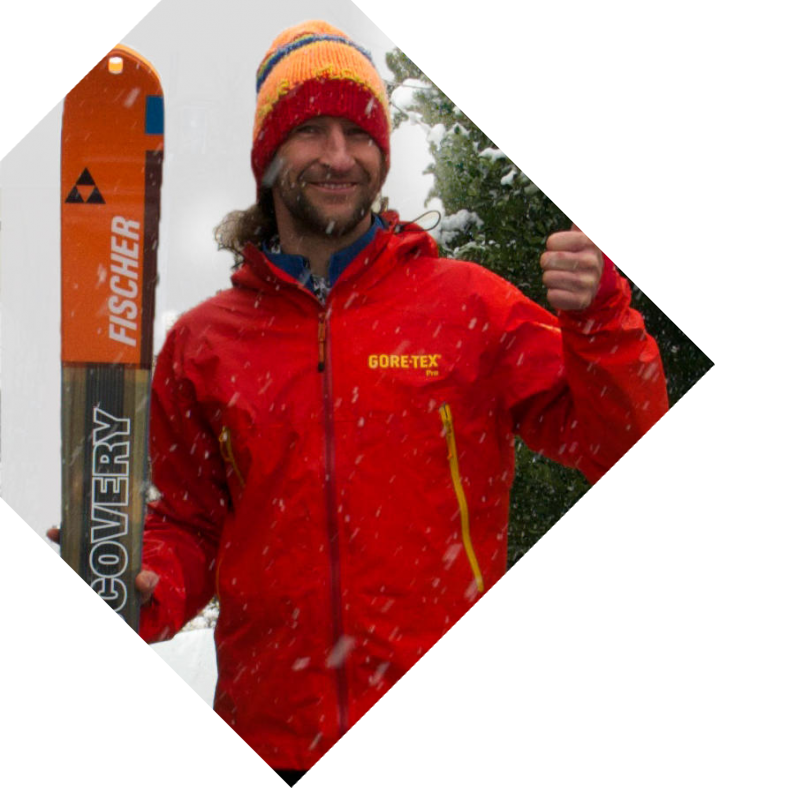It's a gray, rainy day. The fall leaves are hanging from the branches in their rust-brown, autumnal splendor. Apart from winter, spring and summer, fall is the perfect time of year for hiking. No matter what the weather's like, once you actually get out there, it's always great. Guaranteed. All you really need for it is a sense of fun and curiosity, a bit of stamina and good pair of hiking boots. Warm, dry feet are always more comfortable than cold, clammy and sore ones. Need to buy footwear? What kind of shoe is suited for which kind of hike? And what do you need to watch out for when shopping for them? We've put together a few recommendations here, along with some tips on how to care for and get the best out of your hiking shoes and mountaineering boots.
Modern hiking shoes and boots can be used in many ways, and many multi-functional and climbing shoes are also suitable for hiking. So, does that mean anything is good for everything? Uhm, not so fast... Footwear manufacturers put a lot of thought into how to develop a model for a particular purpose. Because what we (and no doubt you) call "hiking" can be as varied as the natural surroundings we find ourselves in.
Yellow, blue, red, black or white... It all depends on where you're heading
If you're going on a three-hour ramble along the dike, you have different expectations of your equipment – including your shoes – than someone who's embarking on a two-week trek along the Way of St. James or who's climbing the Watzmann peak in Bavaria. Hiking through the snowy Black Forest in winter is different than taking a summer hike along the Rennsteig ridge in the Thuringian Forest.
The route and the season are what determine the conditions hikers face. Hiking trail classifications are also helpful in planning your trip and choosing the right footwear. From "yellow" valley paths, gentle "blue" and medium "red" mountain routes right through to serious "black" ascents, the German Alpine Association's color codes are a good point of reference. The Swiss Alpine Club rates hiking routes on difficulty levels ranging from T1 to T6.
Still, you need to be able to interpret this information correctly since there are two types of hikers: those who know their limits, and those who don't. In the mountains, this can be fatal.
Tip 1: Get some advice from a specialist retailer – in particular, this goes for that second category of hiker. A hiking boot sales assistant should ask you where you're going and then be able to suggest the optimal pair of boots.
THE most important criteria is that the boot actually fits your foot. To make sure it does, be sure to take your time for the fitting, and if necessary, bring along your orthopedic insoles and hiking socks * [See below: Put a sock in it!]. There's no need for a long wearing in period with GORE-TEX shoes; if they fit in the shop, they'll fit on the trail.
Tip 2: Try your shoes on in the afternoon or evening. Feet expand during the day and the boots should fit your largest foot size comfortably.
So: Take time to walk around the store. Use any testing courses, walk up and down the stairs and get a feel for if the shoes actually fit. "Fit" means:
- The boot doesn't pinch or rub – not even when bending the instep or standing on tip-toe
- The heel does not slip
- There is enough room in front of your toes to avoid your foot pushing against the inside toe of the boot when heading downhill
- The boot should be snug enough, so your foot doesn't slip around (this is also affected by socks and insoles)
- The side of the boot prevents your ankle from twisting, but the shaft doesn't chafe against the ankles
Footwear tends to get softer as you wear it in. If the boots are already super-soft when they're new, they may feel comfortable at first, but that's not a sign of quality!
The second most important consideration is that shoe and the soles are either firm enough or soft enough for the intended purpose.
Size matters
Are you a trail runner? Then you know what's coming... Your running shoes are probably two sizes bigger than your favorite pair of everyday, lifestyle shoes. With hiking boots, the difference isn't quite so extreme, but there should still be enough space around the toes - in front, on top and along the sides! Every well-known footwear manufacturer has their own particular forms (3D foot models), so someone who finds a Meindl fits perfectly could encounter problems with a Lowa of the same size and category. The toe, instep and heel area can vary greatly in height, width and shape.
When hiking, going downhill is what's decisive. With every step, you slip forward slightly. If the shoe is too short, you end up pressing against the front tip, suffering bruised toes and damaged toenails. When going uphill, you can get blisters if the heel is not fitted properly. That is no fun. And it really hurts. However, with the right taping technique you can usually get a handle on this problem. A boot that is too short in the toe won't get any longer. And taping doesn't prevent bruised toes.
Pay attention to grip and shock absorption
Together with the profile, the stability of the sole determines how much grip a boot has. Both are adjusted to different surfaces and terrain, depending on the model. The stability of the shaft also plays a role: it should provide enough support on the sides, but not limit your freedom of movement. Shock absorption sounds like a good thing at first; however, too much softness ("Wow! These boots are so comfy!") in the shaft can reduce the support, and too much shock absorption in the sole can leave you less sure-footed. If a boot feels spongy, you can cramp up and get tired more quickly. Absorption also means that you lose energy – energy you'd have been glad to have at the end of the day.
Put a sock in it!
Foot, sock, shoe. This is a functioning system where all components have to be compatible. One loose cotton sock can ruin a hike, even with perfectly fitting top-of-the-line shoes. The material, fit and construction of hiking socks help determine if we even want to put on our hiking boots again the next day. Hiking socks ensure moisture and temperature regulation, provide shock absorption and prevent blisters. They should be higher than the top edge of the boot and preferably be seamless, i.e. have no noticeable seams in the toes. That's why high-quality merino socks from well-known manufacturers are unbeatable. The disadvantage of pure cotton socks is that they soak up moisture, but do not release it again. While merino wool captures moisture and supports the functionality of the waterproof, breathable GORE-TEX laminate, cotton prevents the sweat from being released to the exterior. A synthetic-cotton blend can also work and is good at retaining its shape. Pure synthetic is often not very comfortable on the skin; it's too smooth, so you slide about in your shoe, it stores very little moisture and has a strong odor after a very short time. Some socks feature anti-bacterial silver, but we do not recommend them. Firstly, they don't seem to last long and secondly, studies have shown that germs become resistant to antibiotics due to the silver. And third ... there's merino wool! The fact that it doesn't smell – at least not quickly – is probably its biggest advantage. During multi-day hikes, merino socks not only preserve the climate in your shoes but also the climate in the hut!
Inside and outside temperature
Robust hiking shoes with thick, profiled soles and GORE-TEX lining are good all-rounders. In the summer, the breathable GORE-TEX membrane provides 100% protection against the elements and a comfortable environment for your feet. In the winter, a thick pair of socks is usually all you need to prevent your toes from freezing. Flatter shoes with thinner soles are definitely not the best choice for winter hiking. After all, the main reason for cold feet is not thin shoes, but thin soles! Insulated shafts, i.e. real winter shoes, are really only necessary when the temperatures drop significantly below freezing or if you're on a long tour in the snow, e.g. on a snowshoe hike. This is when proper mountaineering boots or special, GORE-TEX-equipped hiking boots with extra insulation are the best choice.
Tip 3: When temperatures drop, replace the standard insoles with thermal insoles.
Also decisive in whether you have cold feet or warm ones: the amount of space in the shoe. If you wear thick socks in the winter, make sure that they don't make the boots too tight, limit the movement in your toes, or cut off the circulation to your feet! This is especially important when buying children's hiking boots. The best thing to do is get them a pair of proper winter boots. Or you can buy them hiking boots one size too big in late fall and have them wear them with thick socks for the first winter. Then there's a chance that the boots will fit perfectly for the next summer hiking season. Maybe...
Long live the boots: Cleaning, maintenance, repair
If your boots are all dirty after a hike again, it's worth taking a few minutes to clean them. If the mud and sand are not removed, they can act like a grater as you walk, which can damage the material of the shaft. In addition, dirt can impede the breathability of the boots and has a hydrophilic effect, meaning that the outer material will absorb water much more quickly.
So, what can you do? Remove coarse dirt immediately after your hike with a soft brush and cold or lukewarm water. Remove the shoelaces so you can also clean the hidden spots. Any dirt on the inside can be removed with a bit of laundry detergent and lukewarm water – be sure to thoroughly remove all traces of detergent! Remove the insoles and clean them as well.
To dry the boots, remove the insoles and place them upside down to drip dry for a few minutes. Then stuff them with paper towels (not newspaper!) and replace them regularly. Special shoe dryers are also well suited for this. Warning: Never leave the boots next to a direct source of heat (campfire, stove, fireplace) or in the bright sunshine. All footwear materials – leather in particular – suffer from this treatment. Store damp shoes in a well-ventilated place, never in the trunk of car or in a closet in the basement.
To maintain waterproofness and breathability, the waterproofing should be refreshed regularly as soon as the outer material is soaked through. The most suitable type of waterproofing treatment depends on what the outer material is. For leather GORE-TEX footwear, a leather waterproofing treatment approved for GORE-TEX products is suitable. Before cleaning, you've already removed the shoelaces. Now, in the open air, spray the waterproofing treatment evenly onto the clean yet damp leather surface. Any excess can be removed with a damp cloth.
Nubuk or suede leather will become more smooth and darker with each waterproofing treatment. Roughing the leather up with a brush after waterproofing can help a bit. After around 24 hours, your boots are ready for their next adventure. If the leather still dries out over time, treat it with some leather wax. Do not use any oil-rich or greasy products!
Our top tip: Worn, but not worn out.
What's the first part of your boot to break? Is the heel area worn down? Is the shoe crumbling at the fold in the toe area? Or is the shaft getting porous around the ankle bend? If so, it's probably time to invest in a new pair of boots... Unless, of course a shoemaker or your choosing is a master of his craft, and the shoes are so valuable they're worth repairing.
If it's just the sole that's worn through, we have good news for you: High-quality, well-designed hiking boots from well-known manufacturers can be easily resoled! Many of our brand partners (Lowa, Meindl, Hanwag, La Sportiva, Scarpa,...) offer this service. The complete sole is renewed, including the cushioning, sometimes the edge of the sole is repaired, and on top of that, the laces are replaced and the shoes are polished and waterproofed. You get a completely overhauled pair of boots with the distinct advantage of knowing they will fit perfectly.
And here some must-have hiking boots for this autumn and winter season:
Dachstein: The Super Ferrata GTX is named after the place it's used: fixed-rope routes and athletic mountain tours. With its to-the-toe lacing, this breathable, waterproof boot can also be easily adjusted in the toe zone.
Lowa Innox Pro GTX Mid: A very lightweight, agile all-rounder with a fabric shaft for hiking and everyday use on less challenging terrain and warmer temperatures. Waterproof, versatile, comfortable.
Lowa Ticam II GTX: A trekking boot for long, challenging tours and carrying heavy gear. Features a solid, torsion-resistant sole construction, a durable leather shaft and reinforced rubber in the toes and heels.
Meindl: The Litepeak GTX is a lightweight, waterproof hiking boot in a class of its own – and that's why it's already been one of our test winners. It's sturdy and provides perfect protection along with very good tread control, even on rough mountain hikes. The PRO Version is even suitable for wearing with hybrid crampons making it perfect for crossing snowfields and glaciers, and dealing with unpredictable conditions.
La Sportiva Pyramid GTX: Lightweight leather, easy lacing, great style, waterproof and all-round breathability thanks to GORE-TEX Surround Technology, which allows the foot to "breath out" through the sole. Experience an extraordinarily comfortable in-shoe environment. Ideal for long and short hikes on moderate terrain.
Salomon Vaya GTX: A lightweight, practical outdoor shoe with an unusual look and excellent internal values. It has an excellent fit, supports the roll-off movement, is waterproof and breathable, and provides a good grip thanks to its studded sole.
Scarpa Mojito City Mid Men Wool GTX. A long name for a cool style. A modern icon of shoe design – waterproof thanks to GORE-TEX protection and, despite the "City" in the name, a genuine outdoor shoe. Not suitable for really long hikes, but perfect for spending an extended time outdoors.

